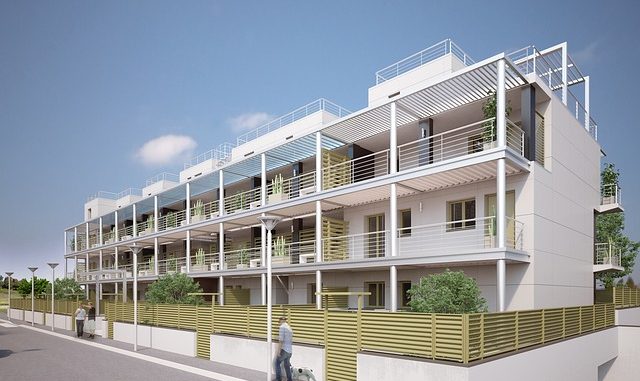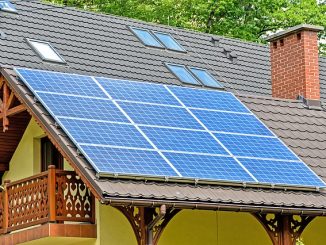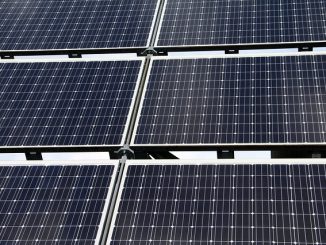
Individual self-consumption of energy produced by photovoltaic panels has been developed for several years in many European countries. The last “big country” to have offered it a legal framework is France in 2017. Today, it seems obvious to have to consume what we produce: the main advantage for me to make each micro-producer active and therefore more attentive to the many changes in the energy world.
Collective self-consumption, ie the possibility of sharing between several consumers, generally geographically close, the production of one or more low power installations (PV or other) is more recent. The press speaks a lot about it and that seems to be one of the fashionable energy topics.
But what lies behind this new system? Is it really advantageous and obvious?
Forgetting that there is an investment to be amortized, many consider that self-consumption gives access to cheaper electricity. In this respect, the inhabitants of buildings, landlords and tenants seemed to be disadvantaged: collective self-consumption gives them identical access to cheaper electricity.
Self-consumption is up-to-date; it corresponds, by its foundations, to several current societal aspirations:
– Sharing gives the feeling of being more efficient, on the one hand, lets regroup to be stronger, on the other hand. It allows consumers to team-up to take a part of independence in front of energy companies they feel bound with, without influence. Sharing gives them leverage.
– The economy: consuming one’s own production reduces the need for expensive infrastructure and gives access to “free” energy.
– Optimization: avoiding the transport of electricity seems to many consumers a hope of savings and gives the illusion of contributing to a collective optimization of energy infrastructure.
As such, it is largely supported by policy makers. In countries where it was first authorized, Germany in priority, it allowed the emergence of new actors who, from a different activity (installation of PV panels, PV panels financing, etc.), have developed a local energy supplier positioning on behalf of communities sharing the same local production. Incumbent energy suppliers quickly positioned themselves to occupy this new terrain and avoid a “market share leak”.
The strongest characteristics of collective self-consumption are not always the most talked about.
It is not certain that the global energy is improved: wider sharing via the network may allow much lower balancing costs.
But on the other hand, these communities have the advantage of engaging consumers and there is a greater acceptance, if not better understanding, of changes in energy systems and markets. In addition, they allow greater use of private capital, so important to accelerate the energy transition. This is all the more useful because it does not require the same level of subsidies to stimulate the market: it is the case when the investment in shared micro-production infrastructures is profitable in less than 10 years.
The start of each community involves the design of the measuring scheme, which cannot be avoided because there are always peculiarities to take into account. This conception is expensive compared to the size of the community: supporting this cost is sometimes problematic.
The person who want to invest in a shared PV, first counts his future customers and therefore plans his return on investment. Suppose (case lived) that 10% of the building tenants, all customers of this micro-producer (independent in the case in question), move during the first two years of life of the facility and are replaced by new inhabitants who, all do not wish to join the community. It is easy to imagine in this case the situation experienced by the investor. Imagine the imbroglio that would have been this situation if the installation had been a property shared by landlords! Do not forget that, at any time, any consumer must be free to choose his electricity supplier: any solution that eliminates this choice is therefore to be avoided!
The cost of managing these situations, the conflicts between tenants as to the use of this common energy, is therefore to be taken into account in the cost of self-consumed energy in such communities. Under these conditions, it is unlikely that it will remain cheaper.
Today, we are in a pioneering phase where the economic actors who manage these communities incur unanticipated costs. The rapid and voluntary development of such communities under their responsibility is therefore temporarily compromised.
Several solutions make it possible to circumvent this difficulty:
– Adopt a collective organization of consumers to manage their community, as they can manage a condominium, but the support of a professional will be necessary soon.
– Delegate part of the tasks to regulated world actors such as the DSOs, accepting the changes thus introduced into the functioning of the energy ecosystem.
In the light of these reflections, I fear that the enthusiasm generated by the collective self-consumption reflects the importance taken by the emotional and the political about it: the interest for the collective self-consumption is strong but its development will succeed if we adapt the perimeter in which the community is authorized to guarantee its economic and energy profitability (and the adaptation of regulations to the response provided) and the establishment of effective and inexpensive management structures of these communities of self- consumers.
Engaging in innovative ways demands not to stay in the middle of the ford.
Receive every quarter all posts of the blog: [sibwp_form id=2]




Leave a Reply